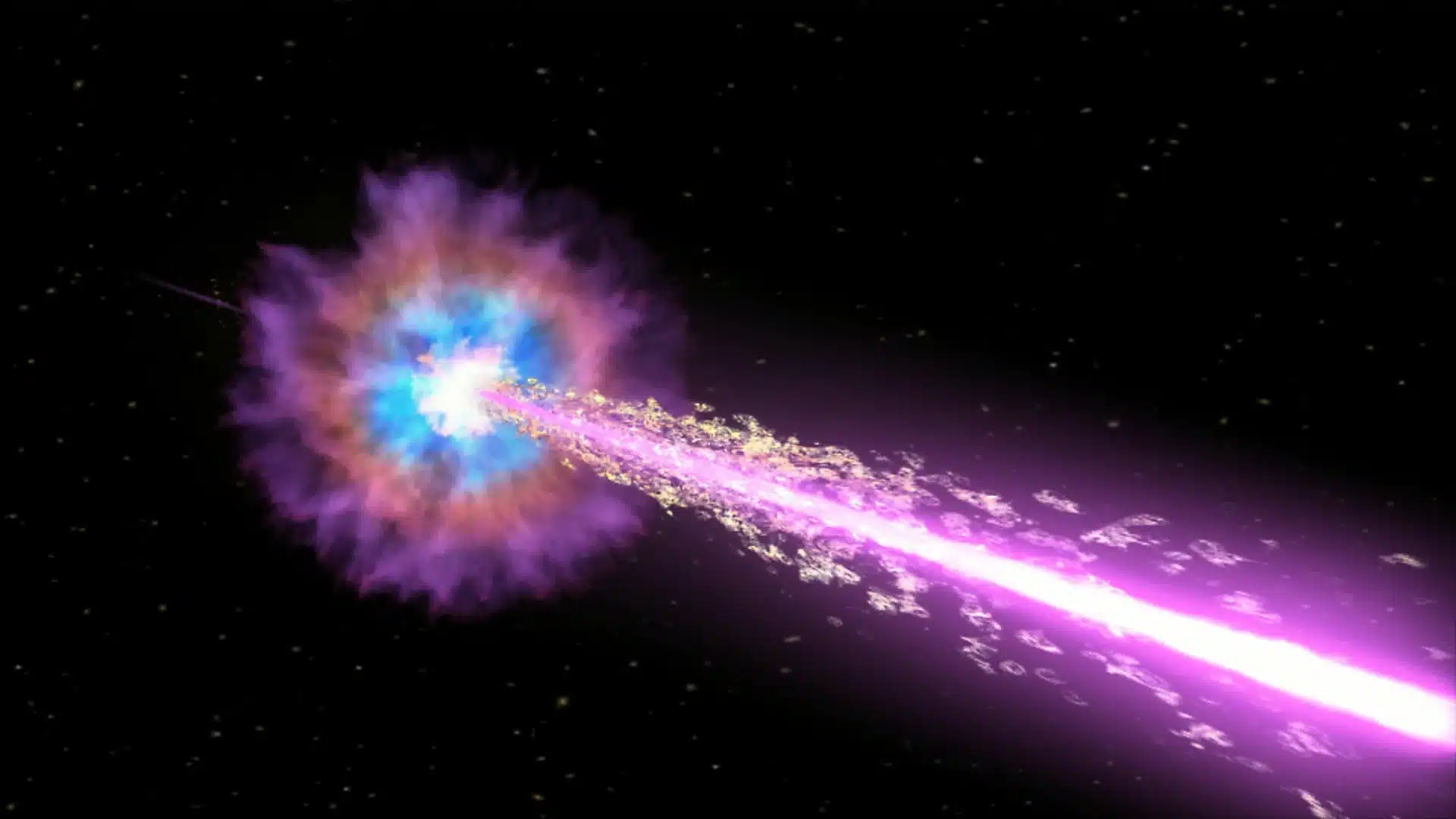Record-Breaking Gamma-Ray Burst Unveils Cosmic Insights

On October 9, 2022, astronomers made a groundbreaking discovery when they detected an unprecedented flash of high-energy light known as a gamma-ray burst (GRB) designated GRB 221009A, or the “Brightest Of All Time” (BOAT). This extraordinary cosmic event originated from a galaxy approximately 2 billion light-years away and was so powerful that it temporarily overwhelmed satellite detectors. Scientists believe that such intense gamma-ray bursts occur only once every 10,000 years, providing a unique opportunity to study the death of a star and the underlying physics of these extreme phenomena.
Decoding the ‘BOAT’
The gamma-ray burst GRB 221009A was initially detected by NASA’s Fermi and Swift spacecraft. Its intense gamma-ray flash was so bright that it blinded detectors worldwide, setting it apart from other gamma-ray bursts. Following the initial flash, astronomers observed a fading afterglow across various wavelengths of light, enabling non-gamma-ray telescopes to conduct further studies.
One significant challenge faced by researchers was that the associated supernova, designated SN 2022xiw, was obscured by the brilliance of the GRB. It was only visible much later, illustrating how the immense energy of the burst can temporarily mask the underlying stellar death. This phenomenon complicates the complete observation of such cosmic events, highlighting the need for advanced observational techniques.
Insights on GRBs
Gamma-ray bursts like GRB 221009A are believed to result from the collapse of a star’s core into a black hole. This newly formed black hole generates twin beams of particles traveling nearly at the speed of light, which break through the star and produce the observed gamma rays. While the data from GRB 221009A aligns with this model, it also presents unexpected findings.
Using the James Webb Space Telescope, astronomers attempted to locate the supernova associated with the burst but found no evidence of heavy elements such as gold or platinum in the debris. Additionally, NASA’s Fermi satellite detected an unusual gamma-ray line, which may represent the first clear observation of electrons colliding with their antimatter counterparts, positrons, and annihilating within a GRB jet. These discoveries are crucial for refining existing models of gamma-ray bursts, stellar collapse, and the processes involved in the formation of heavy elements.
Future Implications for Astrophysics
The unprecedented nature of GRB 221009A not only enriches our understanding of cosmic explosions but also opens new avenues for research in astrophysics. The insights gained from this event could lead to advancements in our comprehension of the life cycles of stars and the mechanisms that govern their explosive deaths.
As scientists continue to analyze the data from this remarkable event, they hope to unravel the complexities of gamma-ray bursts and their role in the universe. The findings from GRB 221009A may also enhance our understanding of the formation of heavy elements, which are essential for the development of planets and life as we know it. This extraordinary cosmic event serves as a reminder of the vast and dynamic nature of the universe, inviting further exploration and discovery.
Observer Voice is the one stop site for National, International news, Sports, Editor’s Choice, Art/culture contents, Quotes and much more. We also cover historical contents. Historical contents includes World History, Indian History, and what happened today. The website also covers Entertainment across the India and World.

